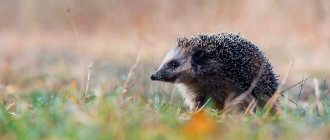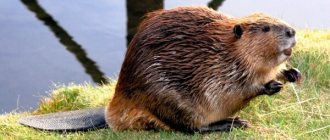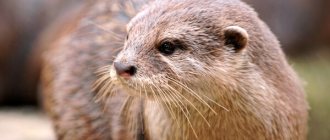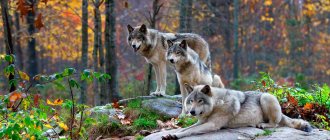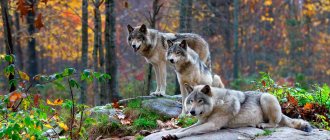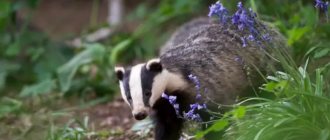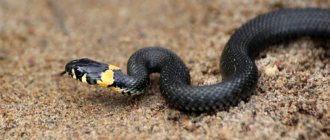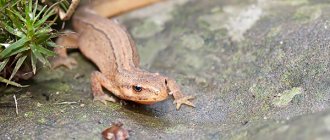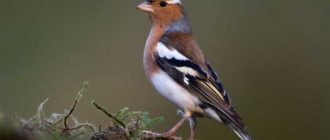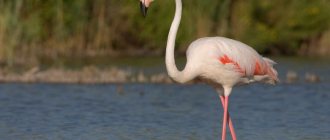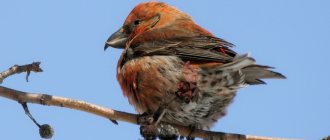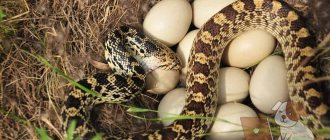23 January77502various animalsinsectivores
The common hedgehog or European hedgehog is an animal from the Hedgehog family, which is a representative of the order Insectivores. The common hedgehog has been familiar to us since childhood. The pages of children's books introduced us to this sweet and kind animal. In this article you will find a description and photo of the common hedgehog and learn a lot about this brave little guy.
What does a hedgehog look like?
An ordinary hedgehog looks quite small, because its size is small. This prickly animal has a body length of 20-30 cm and a very short tail of 3 cm, which is invisible under its fur coat. The body weight of the common hedgehog is 700-800 g. Females are slightly larger than males in size.
The hedgehog looks funny. It has small ears, the length of which is 3 cm. The European hedgehog has a large head with an elongated muzzle, on which there are small, beady black eyes. One of the features of what a hedgehog looks like is its sharp and always moist black nose.
But, despite such a cute and funny appearance, the common hedgehog can boast of having small but sharp teeth. He has 20 of them on his upper jaw, and 16 on his lower jaw. The European hedgehog also has sharp claws on its paws. Each of its paws contains 5 fingers. The hind limbs of the hedgehog are slightly longer than the front ones.
And of course, the most important distinguishing feature of a hedgehog is its spines. Thanks to them, the hedgehog doesn't look so harmless. Surely everyone has wondered, how many spines does a hedgehog have? So, usually an adult hedgehog has 5-6 thousand spines. Young hedgehogs have about 3 thousand spines.
The common hedgehog has short spines, no more than 3 cm long. The hedgehog's spines have a smooth surface, are empty inside and filled with air. They are brown in color with dark and light transverse stripes. Due to this coloring of its prickly coat, the hedgehog looks quite inconspicuous.
The hedgehog's spines on the head and sides are shorter and 2 cm long. Between the spines there are very sparse and thin hairs. The head and belly of the hedgehog are covered with coarse and dark hair.
The paws, muzzle and belly of European hedgehogs range in color from whitish-yellow to deep dark brown. The chest and throat of the hedgehog have a uniform color, without different white spots.
Popular message topics
- Planet Mars
Mars, or as it is called, the Red Planet, was named after the ancient Greek god of war Ares, or, in Roman mythology, Mars. This name was associated with the blood-red color of the planet, which has long been associated with war. - Animals of the steppe Steppes
are vast spaces covered with grass. They are incredibly beautiful in spring, when they are covered with a carpet of blooming tulips and irises. But with the onset of heat, everything changes. The grass withers and turns yellow. - Geranium
Geranium is an unpretentious plant of the Geraniaceae family. Geranium can also be called a similar plant from the genus Pelargonium, but of the same family. The name comes from the Greek word for crane - geranion.
Where does the hedgehog live and how?
The common hedgehog lives in Western and Central Europe, the British Isles, southern Scandinavia, northwestern European Russia, Western Siberia and Kazakhstan. The common hedgehog also lives in New Zealand, where it was introduced. This insectivorous animal is most widespread in Europe, Western Siberia, northwestern Kazakhstan, Asia Minor, Amur region, northern and northeastern China.
The hedgehog lives in different places, but avoids large swamps and dense coniferous forests. The hedgehog lives preferring forest edges, copses and small clearings. In Europe, the common hedgehog can be found in mixed forests, shrubs and grassy plains. Also, a hedgehog often lives next to a person. Therefore, finding a hedgehog in a city park or in a country house is a common occurrence.
Hedgehogs live by being active at night. During the day, hedgehogs live in their nests, where they can rest comfortably. Hedgehogs make their nests in bushes, holes, tree roots or empty rodent burrows.
Typically, a European hedgehog's nest is 15-20 cm in diameter and has a flooring of dry grass, leaves and moss. In such a nest the hedgehog sleeps and can take care of itself. With the help of their paws, hedgehogs take care of their prickly fur coat, and they lick their chest and belly with their tongue.
Also, hedgehogs each live in their own area, where they wander in search of food. During the night, the common hedgehog runs up to 3 km. Males show aggression among themselves and protect their territory. They snort noisily and make various sounds similar to sneezing.
The area of the site for males is 7-39 hectares, and for smaller females it is 6-10 hectares. Even though hedgehogs have a prickly coat, they also shed. In ordinary hedgehogs this usually occurs in spring or autumn. This process is very long and slow. Each new needle grows for 12-18 months.
The small size of the common hedgehog does not prevent it from being quite nimble. These animals can run at speeds of up to 3 m/s, and they are also excellent swimmers and jumpers. Hedgehogs have poor eyesight, but they have a very keen sense of smell and sensitive hearing.
In the summer, the hedgehog prepares for winter and accumulates fat reserves for the winter. In addition to his usual weight, he also gains 500 g of fat, because in winter the hedgehog hibernates. Hedgehogs spend the winter in their burrows. When frosts come, European hedgehogs hibernate, tightly closing the entrance to their burrow. Hibernation usually lasts from October to April.
During hibernation, a hedgehog's body temperature drops to 2 °C. Over the summer, the hedgehog must gain as much fat as possible, because if it hibernates without the necessary supply of fat, it may die of starvation in the winter.
After hibernation, this insectivorous animal does not immediately leave the nest, but waits until the air temperature rises to 15 °C. Common hedgehogs live alone, but settle close to each other. Adults avoid close contact with each other, with the exception of mating season. How many years do hedgehogs live? In nature, hedgehogs live 3-5 years, but the life expectancy of a hedgehog in captivity can reach 8-10 years.
Why do I eat needles? Everyone is familiar with the ability of hedgehogs to curl up into a prickly ball if danger threatens. This animal can remain in this state for a long time until the threat passes. The hedgehog's spines form a strong armor. Therefore, the hedgehog needs needles for protection.
But hedgehog spines require careful care, because the spines collect ticks and other parasites. The paws help the hedgehog clean its thorns. But since they are short, the hedgehog cannot reach everywhere to clean properly.
In such cases, the acid released by the fruit helps get rid of parasites. That's why hedgehogs ride on rotting apples or other fruits. This behavior makes one mistaken in thinking of the hedgehog as a passionate lover of apples, who pricks them on needles and carries them on his back to his hole. But this is not so, the hedgehog prefers insects.
The hedgehog is a peace-loving creature, but it has plenty of enemies in nature. Wolves, foxes, eagle owls and other predators threaten the life of the hedgehog. Having met a predator, the hedgehog first jumps on it to prick it, and then curls up into a ball. Having pricked its paws and muzzle, the predator loses interest and retreats.
But the enemies are cunning and are able to deceive the simple-minded hedgehog. Especially those that feed on hedgehogs. The eagle owl attacks unexpectedly and silently, trying to take the hedgehog by surprise. The bird's paws are protected by thick skin from the hedgehog's prickly needles. The fox drives the hedgehog to the water or throws it from a hill. In such situations, the hedgehog opens its abdomen and muzzle, becoming vulnerable to predators.
But in a duel between a European hedgehog and a snake, the prickly and fearless daredevil becomes the winner. The animal grabs the snake and curls up into a ball, gradually wrapping it around itself. After all, he is insensitive to many poisons.
What do hedgehogs eat?
The common hedgehog is an insectivorous animal. But the hedgehog's diet is not limited to insects. Hedgehogs mainly feed on a wide variety of insects, caterpillars, beetles, slugs, earthworms and also mice. It is quite rare for hedgehogs to get mice and voles.
Hedgehogs also eat eggs or chicks of small birds that make nests on the ground. Sometimes in nature, hedgehogs feed on reptiles and amphibians. Hedgehogs also eat berries and fruits. Therefore, we can safely say that the hedgehog is an omnivore. The only thing a hedgehog cannot eat is dairy products, as a hedgehog cannot digest lactose.
In exceptional cases, the hedgehog even eats a viper. After all, hedgehogs are immune to snake venom and more. The highly toxic poison found in other animals has no effect on this insectivorous mammal.
Poisons such as arsenic, opium and even hydrocyanic acid also have little effect on European hedgehogs. However, large doses of poisons are fatal to hedgehogs. But doses that kill other animals, as well as humans, do not harm hedgehogs.
Hedgehogs in all their forms are waiting for your attention at MAAM!
Contained in sections:
- Wild animals, forest animals 5527
Includes sections:
- Hedgehog, hedgehog. Games, teaching aids 166
- Hedgehog, hedgehog. Fine arts, visual activities 97
- Hedgehog, hedgehog. Class notes, GCD 1706
- Hedgehog, hedgehog. Projects 43
- Hedgehog, hedgehog. Entertainment Scripts 105
- Hedgehog, hedgehogs. Fairy tales, poems, children's literature 104
- Give in the battery and save the hedgehog. Promotion 30
By groups:
- Senior group
- Preparatory group
- Middle group
- Junior group
Showing publications 1-10 of 3493. All sections | Hedgehog, hedgehogs. All about hedgehogs for children
New
Photo
The best
Summary of a lesson on cut-out appliqué in the middle group “Hedgehog”
Summary of a lesson on cut-out appliqué in the middle group “ Hedgehog ”
Goal: Learn to create the image of a hedgehog using cut-out appliqué.
Objectives: -To consolidate and clarify children's knowledge about wild animals ; -Develop fine motor skills; -Cultivate a love for animals; Materials: cardboard, outline of a hedgehog ...
Outline of a modeling lesson “Little hedgehog - four legs” in the first junior group
Topic: Little hedgehog - four legs Purpose: Learn to roll plasticine between your palms, giving it a round shape. Objectives: Educational: • continue to introduce children to plasticine and its properties • teach children to model the image of a hedgehog . Developmental: • develop a sense of form,…
baby hedgehog
After hibernation, hedgehogs begin mating season. Hedgehogs become capable of reproducing at the age of 10-12 months. Males often fight for females. They bite each other's paws and snouts, push each other and stab each other with quills in battle. In a fight, hedgehogs snort and sniff loudly.
After the battle, the winner tries to impress the female and circles around her for hours, attracting attention. Hedgehogs do not form pairs and the female takes care of the young on her own. As a den, the hedgehog digs a hole or occupies empty rodent holes. A flooring of dry grass and leaves is arranged in the hole.
The female European hedgehog gives birth to offspring once a year. Pregnancy lasts a little more than 1.5 months. Usually 3-8 baby hedgehogs are born, but most often 4. Baby hedgehogs are born blind, and their bright pink skin has no spines or fur. The body weight of a baby hedgehog is only 12 grams.
In just a couple of hours from the moment of birth, hedgehogs develop soft spines that harden within 2 days. A baby hedgehog acquires a fully formed quill cover by the 15th day of life. At the same time, the baby hedgehog opens its eyes and begins to learn to curl up into a ball.
The female is with the babies in her den. If someone discovers the nest, the mother takes the hedgehogs to another place. Milk feeding lasts 1 month. When the feeding period ends, the hedgehogs learn to live independently. Already at 2 months they become much more mature, but they finally leave their native den in the fall.
